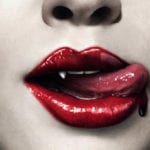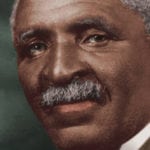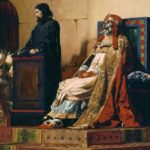 Technology
Technology  Technology
Technology  Humans
Humans 10 Everyday Human Behaviors That Are Actually Survival Instincts
 Animals
Animals 10 Animals That Humiliated and Harmed Historical Leaders
 History
History 10 Most Influential Protests in Modern History
 Creepy
Creepy 10 More Representations of Death from Myth, Legend, and Folktale
 Technology
Technology 10 Scientific Breakthroughs of 2025 That’ll Change Everything
 Our World
Our World 10 Ways Icelandic Culture Makes Other Countries Look Boring
 Misconceptions
Misconceptions 10 Common Misconceptions About the Victorian Era
 Mysteries
Mysteries 10 Strange Unexplained Mysteries of 2025
 Miscellaneous
Miscellaneous 10 of History’s Most Bell-Ringing Finishing Moves
 Technology
Technology Top 10 Everyday Tech Buzzwords That Hide a Darker Past
 Humans
Humans 10 Everyday Human Behaviors That Are Actually Survival Instincts
 Animals
Animals 10 Animals That Humiliated and Harmed Historical Leaders
Who's Behind Listverse?

Jamie Frater
Head Editor
Jamie founded Listverse due to an insatiable desire to share fascinating, obscure, and bizarre facts. He has been a guest speaker on numerous national radio and television stations and is a five time published author.
More About Us History
History 10 Most Influential Protests in Modern History
 Creepy
Creepy 10 More Representations of Death from Myth, Legend, and Folktale
 Technology
Technology 10 Scientific Breakthroughs of 2025 That’ll Change Everything
 Our World
Our World 10 Ways Icelandic Culture Makes Other Countries Look Boring
 Misconceptions
Misconceptions 10 Common Misconceptions About the Victorian Era
 Mysteries
Mysteries 10 Strange Unexplained Mysteries of 2025
 Miscellaneous
Miscellaneous 10 of History’s Most Bell-Ringing Finishing Moves
10 Literary Figures With Crippling Drug Addictions
We’ve covered in the past some of the greatest authors who dabbled in the sauce a bit more than may have been healthy, but it turns out this is something of a trend.
10 Stephen King
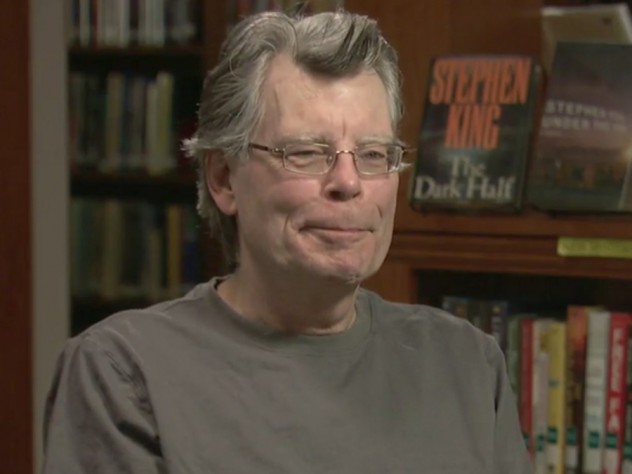
Stephen King is one of the powerhouses of horror fiction. From the time he began writing novels in 1967 through the present day, he’s churned out over 50 novels (that averages to over one per year for 46 straight years). If you want to call that a long-distance writing marathon, then the eight years between 1979 and about 1987 were a full-on sprint, when King sent a massive 22 novels to the publisher. The difference? It’s hard to say, but it might have been all the cocaine.
In his memoir, On Writing, King talks about how deep he really went into the addiction. And it wasn’t just cocaine—not long after he finished writing The Tommyknockers in 1986, his wife staged an intervention by pouring out a trashcan in front of him on the floor. It contained “beer cans, cigarette butts, cocaine in gram bottles and cocaine in plastic baggies, coke spoons caked with snot and blood, Valium, Xanax, bottles of Robitussin cough syrup and NyQuil, even bottles of mouthwash.” He says he was so consistently wasted that he doesn’t remember writing Cujo.
Faced with an ultimatum from his wife (“fix it or get out”), Stephen King went to rehab, sobered up in the late ’80s, and is still writing today.
9 George Carlin

Stand-up comedian and author George Carlin wasn’t shy about his drug use—in fact, he was rarely shy about anything. Since the ’50s, he’s been incredibly outspoken on politics, the natural order, religion, war, genocide, and the whole range of what he tended to refer to as “humanity’s bullsh*t.” As a comedian in the 70s, he was banned from The Tonight Show with Johnny Carson because of his known drug abuse (a stew of pharmaceuticals, pot, and cocaine). It was the same abuse that led to a heart attack in 1978—his first of many.
In 2004, George Carlin voluntarily checked himself into rehab to get a handle on his alcoholism and heavy Vicodin habit (an opioid painkiller), but the damage to his heart had already been done. Over the next three years, he underwent a slew of surgeries, but it was too late. His heart gave out and he passed away on June 22, 2008.
8 Allen Ginsberg
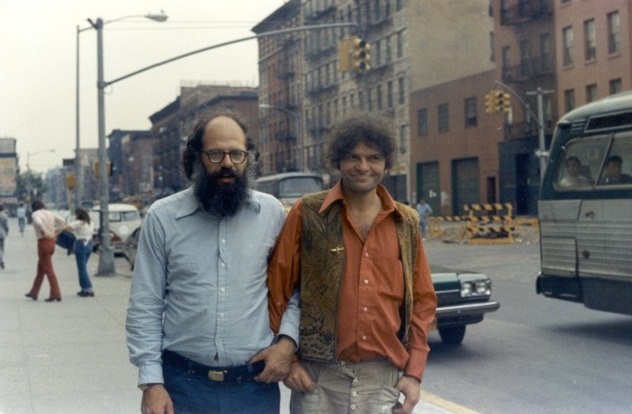
Allen Ginsberg was a poet who stood at the forefront of what became known as the “San Francisco Poetry Renaissance” in the ’50s. Ginsberg began writing poetry as a college student in 1948, and very quickly began using nitrous oxide and marijuana to get him into what he called “an exalted state of mind” for his writing. Along with Jack Kerouac, another famously alcoholic writer of the time, Allen Ginsberg launched into a campaign to describe the feeling of drugs directly through his writing, focusing not only on the physical effects but the change in emotional states and the perception that time was speeding up or slowing down.
In the ’60s, Ginsberg joined Ken Kesey (author of One Flew Over The Cuckoo’s Nest) in his hallucinogenic-driven “acid parties.” To use the word “crippling” to describe Allen Ginsberg’s drug use would be a bit of a stretch, but it was certainly widespread and extremely experimental. After his good friend Neal Cassidy overdosed on drugs and Jack Kerouac succumbed to his alcoholism, Ginsberg drifted away from the drug scene and took a heavy interest in politics. He was arrested several times at protests of the Vietnam War before taking an extended trip to India to study Krishnaism and meditation. He passed away in 1997.
7 Samuel Taylor Coleridge
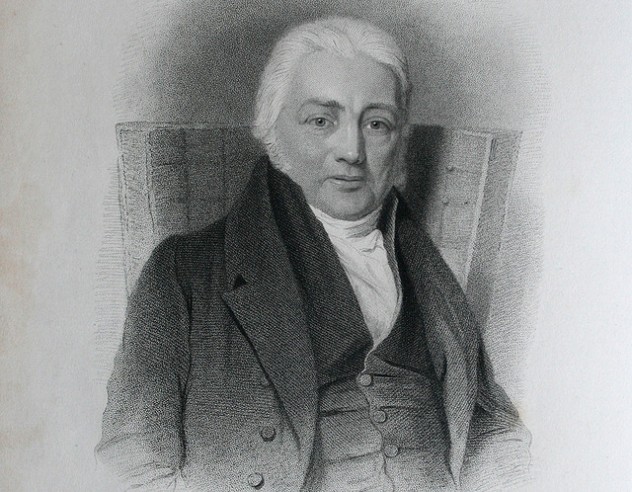
Samuel Taylor Coleridge is probably most famous for his poem The Rime of the Ancient Mariner, and he’s widely considered one of the most influential poets of the 18th and 19th centuries. His poems are haunting, ethereal, and often delve into the twisted dreamscapes of the characters’ minds—and according to the people who study these things, a lot of that came from his lifelong addiction to opium. Coleridge himself even stated that the poem Kubla Khan was barely more than the description of “a sort of Reverie brought on by two grains of Opium, taken to check a dysentery.”
Opium use in Coleridge’s time wasn’t exactly rare—laudanum, a tincture made of opium, was sold over the counter for anything from diarrhea to the flu. Coleridge first began using opium as a student, and built a tolerance against the drug for the next 40 years. By the time his addiction reached its peak, it’s estimated that he was going through two quarts of laudanum each week. To put that into perspective, the concentrations of laudanum in the 18th century had about 10 mg of morphine per milliliter, which translates to 18.9 grams of morphine that Coleridge guzzled down each week. It only takes 1.2 grams of morphine to kill a horse.
6 Elizabeth Barrett Browning
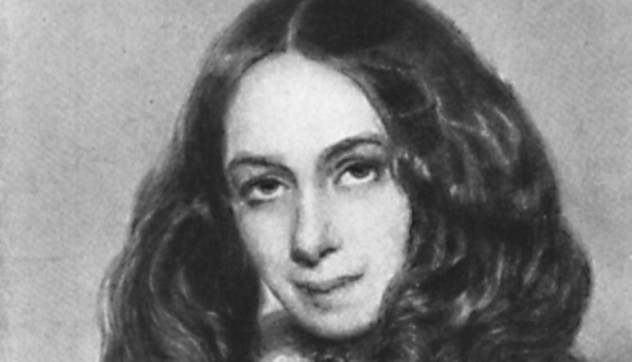
Somewhere between the ages of 13 and 15, poet Elizabeth Barrett Browning began suffering from intense pain in her spine and neck. The doctors at the time couldn’t figure out what was causing the illness, so they turned to the Victorian-Era fallback: copious amounts of opium. The illness stayed with Browning for most of her life, and along with it, the drug.
Since she started using opium at such an early age, Browning remained weak and frail into adulthood, by which point she had made the switch from the watered-down laudanum tinctures to pure morphine. Hopelessly addicted by her twenties, Elizabeth Barrett Browning experienced the world through an opium haze for the vast majority of her life, to the point that it became just as essential to her existence as clothing. When she was 37, she wrote to her brother, “I . . . long to live by myself for three months in a forest of chestnuts and cedars, in an hourly succession of poetical paragraphs and morphine draughts.”
Browning took her last dose of morphine on June 29, 1861 and died with a smile on her face.
5 Aleister Crowley
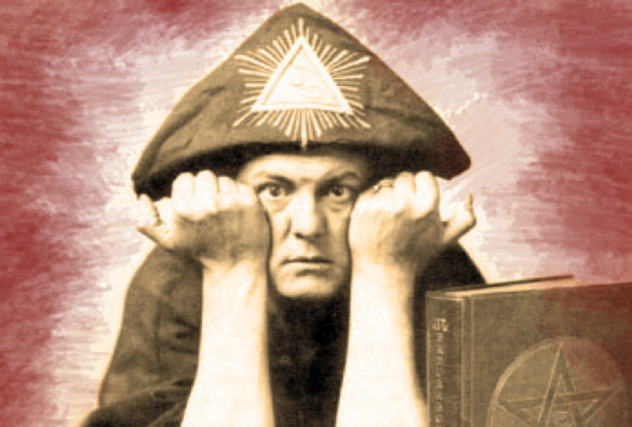
As the author of books with titles like Diary of a Drug Fiend and Enochian Sex Magick, it doesn’t take any real stretch of the imagination to conclude that Aleister Crowley may have had more than a passing interest in drugs. While his drug use is usually overshadowed by his other “achievements” (neoshamanism, occultism, anti-semitism, self-proclaimed sainthood), it was present at both the beginning and end of his life in the form of severe heroin addiction.
In his book The Confessions of Aleister Crowley: An Autohagiography (A “hagiography” is the biography of a saint—always written by someone else. No real saint ever wrote an “autohagiography”), Crowley gives detailed descriptions of his lifelong experiences with heroin, morphine, mescaline, marijuana, cocaine, ether, and opium, many of which were used for “magickal” purposes.
Crowley died in 1947 from a respiratory infection and complications caused by heroin, which had been prescribed to treat his bronchitis in the first place. Ironically, the British have labeled him both “The Wickedest Man in the World” and No. 73 on the BBC List of 100 Greatest Britons.
4 John Keats
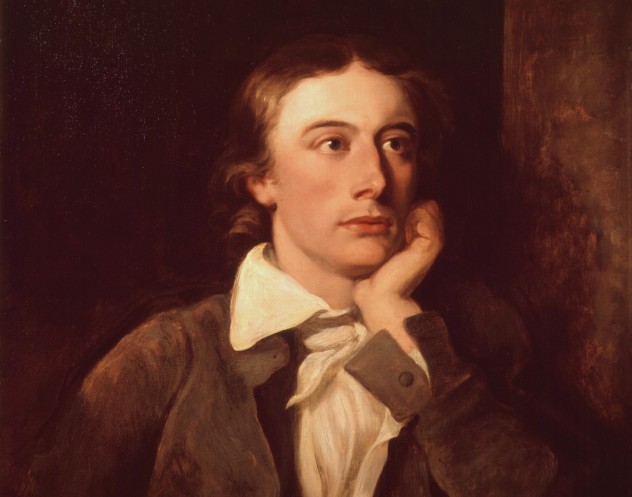
John Keats was a poet who lived at the turn of the 19th century, and despite having one of the most recognizable bodies of work of the era, he died of tuberculosis when he was only 25. It wasn’t until four years before his death that his first poem was published. His writing continued languidly without much success and suddenly, two years later, he began writing almost feverishly, creating his three most famous poems in the space of only a few months.
It turns out that that period at the beginning of 1819 was probably the time when the young poet was taking the most opium, giving him “opiate reveries” like the ones described by Samuel Taylor Coleridge. Of course, it’s not actually proven that Keats took opium at all in his later life, although he was given laudanum as a child and he spent a few years administering laudanum to his brother, who also died of tuberculosis. In any event, his poems Ode to a Nightingale and Ode to Indolence are considered to be a drastic departure from his earlier poems—which would make sense if he was falling into an opium addiction.
3 William S. Burroughs
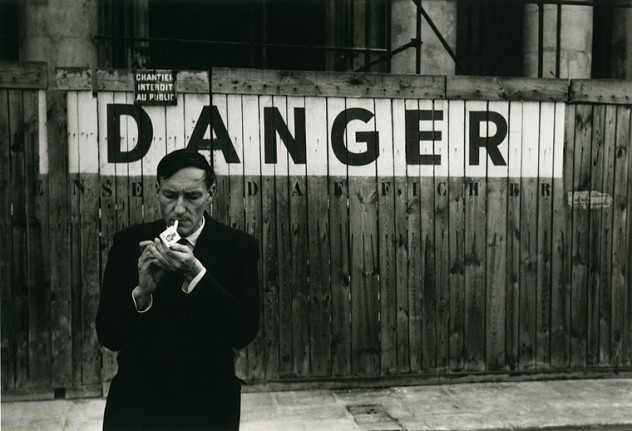
In contrast to other authors who have gone through drug addiction (indeed, in contrast to most of the people on this list) William S. Burroughs has a decidedly negative view of the relationship between drugs and writing. Where some people see inspiration or creative energy, Burroughs sees only depravity and sickness—which could be considered surprising since most of his novels are based on the 15 years he spent addicted to heroin. He’s even come out and said that he couldn’t really remember writing his most popular novel, Naked Lunch, and didn’t even know what the title meant for a while.
As a young man, Burroughs graduated from Harvard in 1936 and soon attempted to join the Navy during World War II. However, disappointed that he had been assigned to the infantry (he wanted to be an officer), he brought out medical papers claiming that he had a mental illness and was discharged. From there he moved to New York, got an apartment with Jack Kerouac, and started selling heroin. The next decade and a half of his life was dictated by drugs. He even moved to Mexico for several years because it was easier to find drugs there. This quote sums up his experiences pretty succinctly: “I have smoked junk, eaten it, sniffed it, injected it in vein-skin-muscle, inserted it in rectal suppositories. The needle is not important. Whether you sniff, it smoke it, eat it, or shove it up your ass, the result is the same.”
2 Norman Mailer
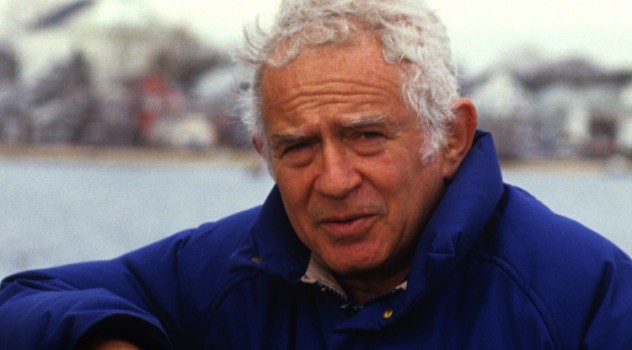
Equal parts brilliant novelist and raving, unbalanced chauvinist, Norman Mailer has certainly made his mark on US history. He was well known for his alcoholism in a time when alcoholism was the latest fad, taking it to extremes that would have made Hunter S. Thompson cringe. He became one of those authors who—despite winning two Pulitzer Prizes and receiving critical acclaim—was arguably more famous for his personal life than his writing. In addition to the drugs and alcohol, it was his violent nature that really drew the spotlight. Mailer was arrested multiple times, punched fellow writer Gore Vidal in the face, and stabbed at least one of his wives (he went through six of them).
Normal Mailer was still writing in 2007 at the age of 84 when he passed away from acute renal failure.
1 Philip K. Dick

If there was an award for the most schizophrenically delusional writer in history, Philip K. Dick would have been one of the top contenders. His drug of choice—his “writer fuel”—was amphetamine: everything from crystal meth to dextroamphetamine (now used in Adderall). From nearly the beginning of his writing career, he became one of the many counterculture icons of the ’60s and ’70s and eventually turned his house into something of a commune for wayfaring drug addicts. Their behavior became part of the inspiration for the people in A Scanner Darkly.
Most of his books center around an inability to distinguish reality from psychosis: His science fiction came from a blurred line between his own reality and the thoughts parading through his head. He often raved about seeing a giant metallic face floating above him in the sky, and for a brief period he believed that he had become possessed by the spirit of the prophet Elijah. In 1971, Dick’s house was broken into by a burglar, and he spent the next 11 years spinning through conspiracy theories about who was behind it, alternating between secret police, the CIA, and fringe political groups. Eventually, he decided that he must have been the burglar: He believed that he broke into his own house after being brainwashed by the government.
In 1982, at the age of 54, Dick suffered two consecutive strokes that left him brain-dead. He died in the hospital five days later. His novels have since become the source material for nearly 20 films, including Minority Report, Total Recall, and Blade Runner.


